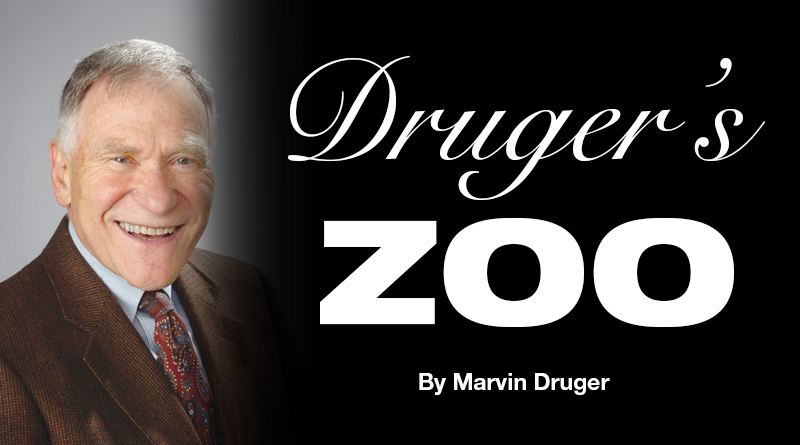Marvin Druger Goes to India
He shares his thoughts before the trip — and after it
By Marvin Druger
Email: mdruger@syr.edu
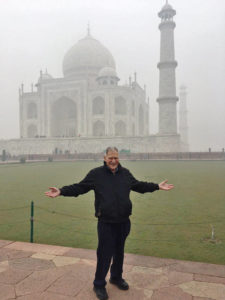
Before
I am writing the first part of this article about a week before I depart for a trip to India. My grandson Keith is marrying an Indian-American woman and the wedding celebration is in Bhubaneswar, India. I am very reluctant to make this trip.
First, I have traveled to many places in the world, but India was never on my bucket list. I have read about the overcrowding, poverty, disease and pollution in parts of India. Of course, there are also beautiful sights to see. The plane lands in Delhi and I have recently read that the air pollution is three times that of what is considered hazardous. It is said to be like “a gas chamber” and equivalent to “smoking 50 cigarettes a day.” I bought 3M respirator masks, but even this is frightening, since it says on the box, “Misuse may result in sickness or death.”
I’ve had so many preventive shots — hepatitis A and B, shingles, typhoid and tetanus — that I feel like a pin cushion. I have a packet of malaria pills to take during the trip. I also am stocked with Peptol Bismol, an antibiotic, aspirin and other medically-related items. My daughter is packing Ensure, crackers and peanut butter, protein bars and other food items for me. I will have to drink and brush my teeth with only bottled water. Even so, I am told that even Indian people who travel to India experience diarrhea and intestinal ailments. I expect to lose some weight on this trip.
Second, despite regular exercise and avoidance of unhealthy habits, I realize that I am no longer a young man and the flight to India is long and stressful, and jet lag will be especially difficult to handle. My daughter arranged for me to travel business class (at my expense) and my granddaughter will also be in business class (at my expense) to watch over me. (I remember the days when I watched over her). I do not sleep well on plane flights. I usually am too busy worrying about whether or not the wing will fall off in turbulence, and whether or not the plane will run out of fuel. Once, when I was in business class, I had to go to the bathroom, but I couldn’t figure out how to get out of the fancy contraption that I was sitting in. My companion, Victoria, had to assist me.
Third, my digestive system does not do well with Indian food. The food is usually spicy and I have an aversion to spicy food. Some people love spicy Indian food, but not me.
Fourth, this ceremony in India is one of three major ceremonies related to the wedding. There already was an engagement celebration in Tennessee, where the bride’s parents live. By any standard, this engagement party was like a wedding. Music, dancing, sarees and Indian food were abundant. The second marriage celebration is the one in India. Then, there will be a third celebration in Tennessee for those individuals who could not make the trip to India. I hoped that included me, but no such luck.
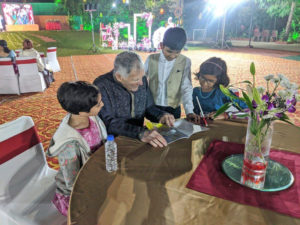
Fifth, the trip to India is very expensive, especially for someone who has a Great Depression mentality, common to people of my age. My daughter convinced me to take the money for the trip out of a bank account that I usually don’t use. Her view was that I might as well spend the money when I’m alive since “you can’t take it with you.” My response was, “If I can’t take it with me, then I’m not going.”
I even called a physician to ask whether or not I should make this trip. I hoped that he would reinforce my negative feelings about the trip. Instead, he said, “Sure you can go. Have a great time.” I told him that I wanted him to prohibit the trip. He said that, if I really didn’t want to go, he would write a letter to that effect for me. I asked myself, “Who should he send the letter to? My grandson?”
I can add more reasons not to go on this trip, but there are reasons why I am going.
First, I love my grandson and he really wants me to be there. My wife died several years ago, and I am the surviving grandfather in the family. I should be at this ceremony. Also, I want to see my grandson and his new bride celebrate their lives together.
Second, there really are many beautiful things to see in India, and I will take a photo of me standing outside the Taj Mahal.
Third, traveling always brings exciting, interesting and memorable adventures. Sharing such adventures with my family should be fun.
Life is short, so it is important to do as much as we can while we can. If we live long enough, we are bound to slow down and get some illness that we don’t want. We should try to do more before we have to do less. Also, we never know what fate lies ahead. So, living for the moment is a good theme, especially for the over-55 generation.
My daughter said, “This trip to India will be the trip of a lifetime.” I hope not.
After
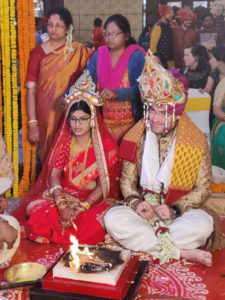
The trip to India was fascinating. I saw ancient treasures, learned about Indian culture, made many new friends and spent quality time with my family at the wedding festivities. Contrary to the “before” segment of this article, I would highly recommend a trip to India for anyone interested in adventurous, international travel.
There were many highlights:
• 1. I was thrilled when a security guard at the airport asked me, “Are you over 65?” I responded, “Are you kidding?” and let it go at that, without further explanation.
• 2. Temples were interesting to visit, but the Taj Mahal was something special. The Taj Mahal is a marble mausoleum, made entirely of luminous white marble, inlaid with colorful stones, in the city of Agra. It is the tomb of Mughal Emperor Shah Jahan’s favorite wife who died giving birth to her 14th child. Shah Jahan is also buried there. The complex took about 21 years to complete and involved about 20,000 workers. In 2001, the Taj Mahal was listed as one of the New7Wonders of the World.
• 3. The wedding festivities of my grandson and his bride Sonia lasted three days. There was a different major event each day and each event required a different outfit. The first day in India was spent shopping for sarees for the women and kurtas (long shirts) for the men. The first event was a dance party; the second day there was a family dinner; the third day’s event was the actual marriage ceremony and a reception. The actual wedding had many intricate components and took hours to complete. Many people didn’t even observe the entire proceedings, but were milling about, feasting on Indian food.
Hundreds of photographs were taken at the festivities. A smile was frozen on my face.
Dancing and music were part of every event. Despite my advanced age, I joined the festivities and danced energetically to loud, ear-piercing music. A parade of guests danced in the street to the wedding site. The parade surrounded my grandson who was dressed in an elegant sherwani (an Indian frock coat) and sat in a carriage pulled by two white horses. This was truly a wedding celebration.
• 4. I was in Delhi and in Bhubaneswar. Poverty was everywhere. Poor people lived in shanties along the streets. Garbage littered the streets. Beggars knocked on the window of our car and many carried babies to attract attention. Stray dogs were everywhere, plus occasional cows and bulls. In contrast, there were many upscale stores and hotels. We were told only to drink bottled water and eat our meals in the hotel or in reputable restaurants. The contrast between wealth and poverty was striking.
I felt ashamed and guilty that I was at a luxurious hotel enjoying wedding festivities, while so many people were in the streets outside, struggling to survive, without any hope for future prosperity. It was sad to realize that the poor people in the streets were also humans and had unique talents that would never be contributed to society. It reinforced my basic belief that nobody is better than someone else. It’s just that some are more fortunate than others. The tragedy is that the poverty in India seems beyond repair.
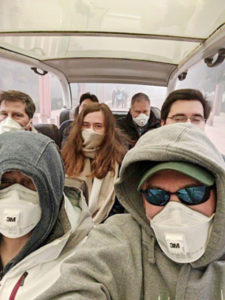
• 5. Traffic was horrendous. There were few traffic lights or stop signs and heavy traffic was everywhere. Motorcycles and three-wheel vehicles zigzagged between cars, and vice versa. To my amazement, I didn‘t see any accidents. I mentioned this to our driver and he said, “What you need to survive in traffic are a horn, brakes and good luck.” He said that low incidence of accidents is what they call the “Indian miracle.” Some cars have lemons and chili peppers tied to the front bumper to ward off evil and accidents.
• 6. Although air quality in Bhubaneswar was acceptable, the air pollution in Delhi was suffocating. We had to wear masks all the time, and there was a smoggy mist, making buildings look surreal.
• 7. The Indian people we met were very friendly and hospitable. They have great respect for older people and, on several occasions, individuals touched my feet (a sign of respect) and bowed their heads to receive a blessing from me. I had to convince myself that I was really not some holy minister. I was impressed by the patriotism of all the Indians we met. They are proud of their country and expressed great love for it.
• 8. Since we only ate meals in modern hotels, nobody became ill from the food. Indeed, some family members liked the food so much that they gained several pounds. Being cautious about eating spicy food, I didn’t eat as much as usual. I lost about three pounds on the trip. I returned home with severe jet lag and a cold that came from the plane trip.
Above are only a few of the highlights of my trip to India. I shall always remember my experiences there, and I developed insights about the country and its people. My only regret was that my dear wife, Pat, who died in 2014, was not with me to share this adventure and witness the marriage between her grandson, Keith, and Sonia. This was not only a marriage between two individuals. It was a marriage between two families and two cultures. How wonderful!

